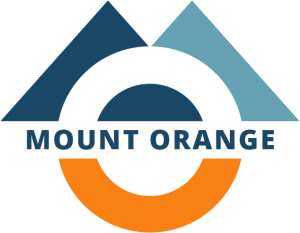Technical Glossary -- (Kurt Smith)
Completion requirements
Browse the glossary using this index
Special | A | B | C | D | E | F | G | H | I | J | K | L | M | N | O | P | Q | R | S | T | U | V | W | X | Y | Z | ALL
A |
|---|
AAC advanced analogue coding | ||
AC Wall ChargerAC Wall Charger is an essential accessory for use with mobile�phones and other electronic devices. The charger enables the mobile device to be powered, and for its battery to be recharged, by connecting it to a mains electricity supply socket.
AC wall chargers are often the only means of recharging the battery, and are usually supplied with a phone as they are designed to work with a particular product or type of battery. Wall chargers should not be interchanged without first taking advice, or expensive damage could result. Also note that it is normal for chargers to get warm while in use
| ||
ACELPAlso known as: Algebraic Code Excited Linear Prediction
Algebraic Code Excited Linear Prediction, or ACELP, is a speech compression system, used to provide a good standard of speech quality when the network is operating at low data rates (i.e. narrow bandwidth). The analogue voice signal is converted to a digital data signal, so that it can be compressed for transmission over the network, and the process is then reversed at the other end when the digital data is converted back to an analogue voice signal. The quality of the reproduced speech will appear to be much better at the receiving phone than would have been the case if an ACELP system had not been used.
The technology associated with ACELP is defined by the ITU-T (International Telecommunications Union-Telecommunication Standardization Sector) and this has been used for a long time as a standard on the Internet for voice applications, being integrated into software such as Microsofts MediaPlayer?.
| ||
ADC analogue to digital converter | ||
ADSLAlso known as: Asymmetric Digital Subscriber Line
Asymmetric Digital Subscriber Line (ADSL) is a technology allowing high rates of digital data to be sent over conventional twisted-pair copper telephone lines. It is referred to as asymmetric because it provides a significantly greater bandwidth in one direction than the other, with faster data transfer from the network to the subscriber than it is in the opposite direction. Consequently, ADSL suits the Internet user who downloads large amounts of data from the Net, but tends to send comparatively little data back in return.
Theoretically, data speeds of up to 9 Mbps (megabits per second) are possible downstream to the customer, and up to 800 kbps (kilobits per second) upstream. This high-speed, high bandwidth digital communication makes live MPEG2 video signals possible, as well as a range of other multimedia broadband services. However, in practice capacity is lower than the theoretical maximum, because line length reduces data speed and limits the exchange to subscriber distance at about 2 miles.
ADSL requires the installation of a special modem, but ADSL then provides an 'always on' connection to subscribers. Simultaneous voice and data transmission is also possible over the same line, because the data transfer uses a section of the phone line bandwidth not utilised by voice. Therefore, subscribers can leave their computers logged onto the Net without interrupting their normal phone connections.
A form of ADSL, called Universal ADSL (G.lite), has been approved as a standard by the ITU-TS for services to homes and businesses. Universal ADSL can provide speeds of up to 1.5 Mbps over conventional phone lines. However, although a provider might typically offer a downstream rate of 512 kbps, this is still about 10 times faster than the fastest analogue-to-digital modems, and several times faster than an ISDN (Integrated Services Digital Network) connection. Upstream speeds can reach 128 kbps
| ||
AGCHAlso known as: Access Grant Channel
Access Grant Channel (AGCH) is a downlink channel (base to mobile) used by a BS (Base Station) to tell the MS (Mobile Station) which DCCH (Dedicated Control Channel) to use, after the MS has previously requested access to the network by sending a message over the RACH (Random Access Channel).
The AGCH is used to assign resources to the user who has requested access to the network, and the BS allocates a TCH (Traffic Channel) or SDCCH (Stand-Alone Dedicated Control Channel) to the MS, allowing it access to the network
| |
AIartificial intelligence | ||
AIDAabbr. Attention, Interest, Desire, Action the
objective of all advertisements | |
AMPSAlso known as: Advanced Mobile Phone Service
Advanced Mobile Phone Service (AMPS) is a first generation analogue cellular telephone system that originated in the USA in the 1980s. AMPS is still the most widely deployed cellular system in the United States, and has been used in other countries of North and South America, as well as the Asia/Pacific region, although it is not compatible with European mobile phone standards. AMPS can be found in countries such as Canada, Australia, Hong Kong, New Zealand, South Korea, Singapore, Taiwan, Thailand and Israel.
AMPS operates in the 800 and 900 MHz frequency bands. Frequency Division Multiple Access (FDMA) is used to divide each band of operating frequencies into 30 kHz channels. Adjacent cells will then employ different channels for their transmitted and received signals, so that one cell does not interfere with another, and as a user moves between cells the channels change without any noticeable transition.
AMPS was updated with digital cellular service, i.e. digital AMPS (DAMPS), by adding Time Division Multiple Access (TDMA) to each channel
| |
